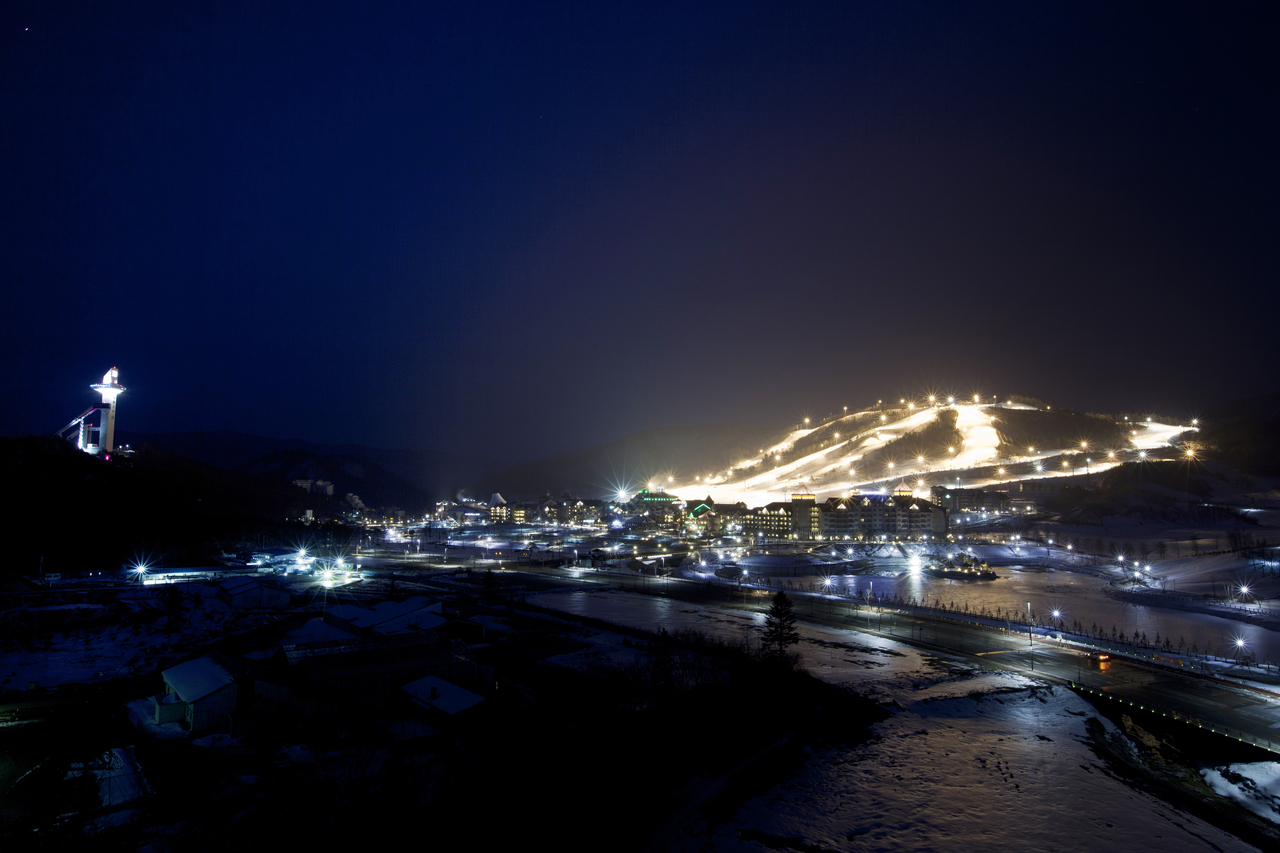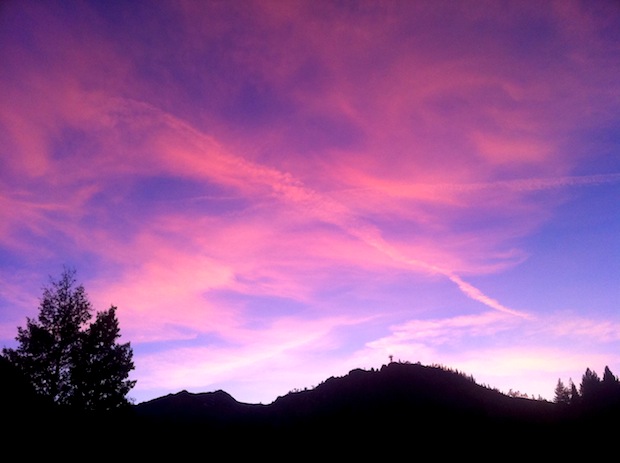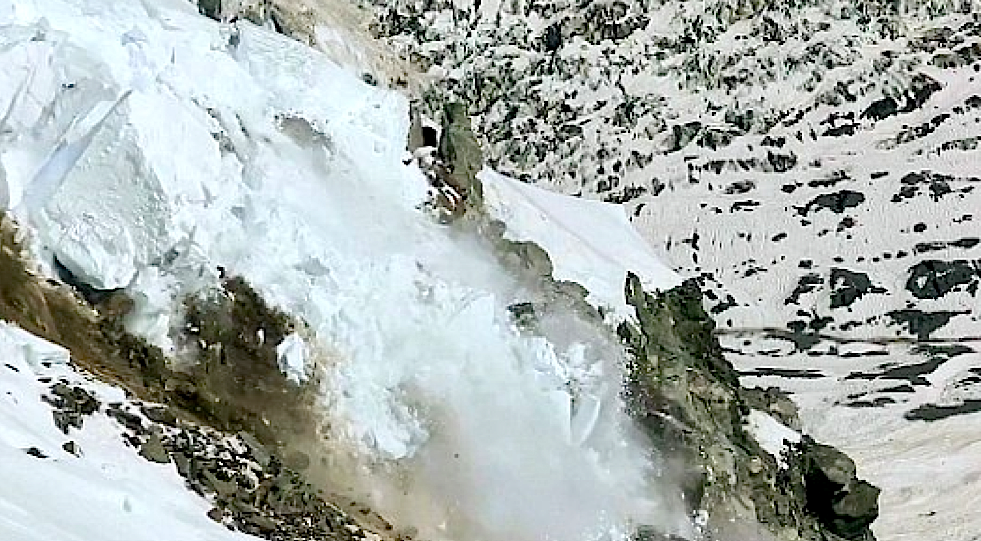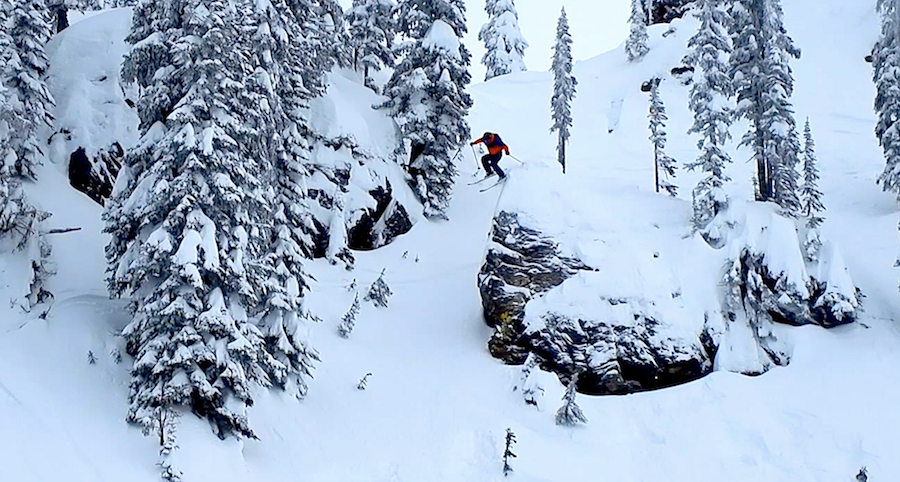Taebaek Mountains, South Korea. (Photo credit: SportsFeatures.com)
There are only 508 days left until the next Winter Olympic Games! Can you imagine? It’s right around the corner! On July 6, 2011 the International Olympic Committee (IOC) announced that Pyeongchang will host next Winter Olympics 2018. The South Korean city won overwhelmingly on the first ballot, receiving 63 votes, compared with 25 for Munich, Germany, and seven for Annecy, France. Pyeongchang will also be the third East Asian city to host the Winter Games after Sapporo, Japan (1972) and Nagano, Japan (1998).

The Games will take place February 9th – February 25th 2018. Let’s have a close look into how are the preparations going. South Koreans are working hard to get all the sites ready for Winter 2018. Pyeongchang is in two hours drive from the capital. There will be fast bullet train connecting Seoul and Pyeongchang that would cut traveling time to just over an hour! Construction has been started in 2012 and should be completed in 2017. New high-speed rail line will have ten trains based on the French TGV Réseau, each consisting of 15-cars operating at up to 300 kilometers per hour at maximum speed.
High-speed train Seoul-Buasn Korean Train Express (KTX) (Photo credit: Bloomberg / Getty Images)
Pyeongchang is located in the Taebaek Mountains region with the highest peak Mount Seoraksan (1,708 m) and is the most popular winter sports destination in the country. The following venues will be ready to host future champions. The Olympic village will be open at Alpensia Ski resort.
Olympic Village, Alpensia resort (Photo credit:Photo credit: KoreaTours)
The Alpensia Ski Jumping Stadium, part of Alpensia resort, will be the location of ski jumping events!
Alpensia Ski Jumping Stadium (Photo credit: KoreaTours)
The other venues will include Alpensia Biathlon Center as well as Alpensia Sliding Center, also part of Alpensia resort.
The nearby Yongpyong resort will host alpine skiing technical events (slalom and giant slalom). The speed events of downhill, super-G, and combined will be held at Jeongseon Alpine Centre (currently under development).
Yongpyong ski resort (Photo credit: Yongpyong ski resort)
Four new disciplines were added to the program for the 2018 Winter Olympics in Pyeongchang! Curling mixed doubles, speed skating mass start, Alpine skiing team event and snowboard big air (Yay!) were all approved for the Games in South Korea by the International Olympic Committee’s ruling Executive Board. Snowboard parallel slalom, however, has been dropped to make way for snowboard big air, with the agreement of the International Ski Federation (FIS).
Angus Leith, frontside 1080 tail (Photo credit: Whitelines Snowboarding)
But will South Korea get enough snow for Olympics? The country has a temperate climate with four distinct seasons. Winters are usually long, cold and dry. Summers are very short, hot, and humid. Spring and autumn are pleasant but short in duration. The country has enough rainfall, rarely it does less than 75 centimeters of rain fall in any given year; for the most part, rainfall is over 100 centimeters. Both future Olympic ski resorts are located in Gangwon-do, the region that receives the most annual snowfall!
And if you plan on attending 2018 Winter Olympic Games, don’t miss trout festival!
Pyeonchang trout festival (Photo credit: VisitKorea )










